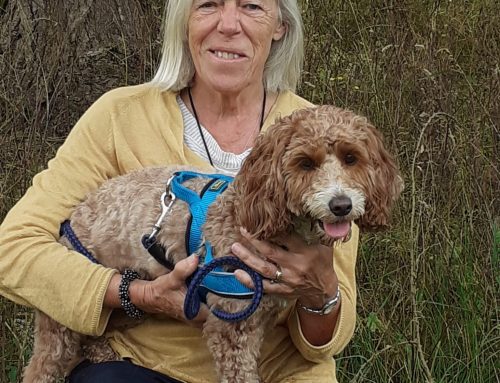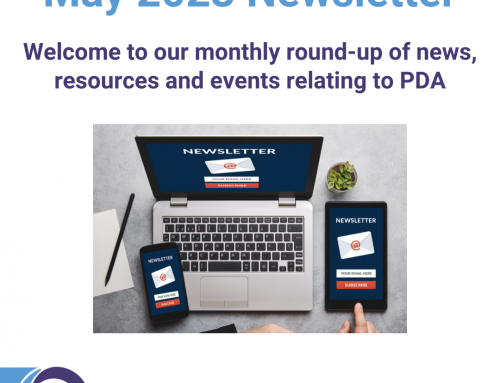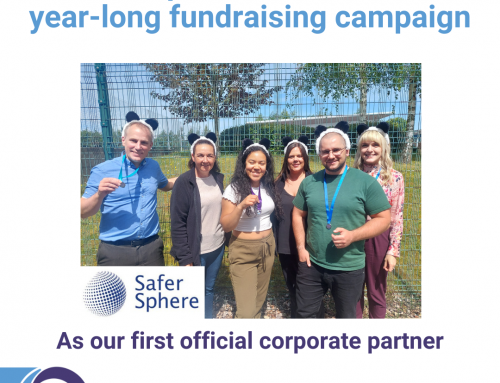
The National Autistic Society’s 10th annual PDA conference was held in Birmingham on 26th November 2019.
Sally Russell OBE, Chair of the PDA Society, gave the introductory speech covering the context and current initiatives around the PDA profile of autism – please see below.
The PDA Society, Network Autism and Steph’s Two Girls also live tweeted on the day and this gives a good summary of the event and can be read here.
Sally Russell – introductory speech at NAS PDA Conference 26/11/19
As an introduction to the NAS’s conference on PDA, I thought I would address the professional debate on the topic. At the start of this year I was kindly invited by PDA Action to join them to visit the officials at the Department of Health and Social Care, the civil servants said ‘we want to understand what the barriers are….what is stopping the recognition of PDA’. It is a question that I’ve thought about a lot since then. It seems to me that there are many, but they are not insurmountable, and I will come onto them in a minute, but first I wanted to quote Prof Dame Maggie Snowling:
“I actually think it doesn’t matter what the name is, but I do think IT should be named.
If you don’t label things no one is aware of them and you don’t get any intervention.”“I understand why people debate the concept, but…it does exist and we know that those children don’t respond to normal classroom interventions and they need something else.”
I am sure you would all agree with that, and you would imagine that she was talking about PDA. But actually, that was from the Radio 4 Programme ‘Word of Mouth’ with Michael Rosen just a few months ago and she was talking about dyslexia.
“I think a lot of people bothered about the name are actually bothered about the diagnosis, so it’s a different way of expressing that actually dyslexia doesn’t exist.”
Until then I’m afraid to say I didn’t know that there was still a debate over whether dyslexia exists, or that it is a reason for young people not being able to have the support they need. She explained that the reasons are partly about the difficulty of a medical approach. With an illness generally, either someone has it or they don’t – as with chickenpox for example. Choosing a cut-off with something that is on a continuum doesn’t sit naturally, even though it applies to decisions to offer help for blood pressure or obesity.
The other reason she noted concerned financial policy – if we identify it, we have to pay to do something about it.
You can see that with PDA some of the debates are the same – can we draw a boundary around this thing? If not, perhaps we shouldn’t be talking about it? If we do talk about it, what follows?
I believe that is helpful to know that the debate about the PDA profile is NOT personal. The difficulties we see in part relate to the way neurodiversity is understood and the systems we as humans have created for organising ourselves, our thinking and the world around us (including financial).
So back to the barriers:
- Awareness of autism has increased dramatically in recent years which is wonderful to see, but in some ways it is hampering us now. As a social worker who goes on a day’s training, there is a limit to what you can be taught, and so we now have a large number of people who have a very stereotypical view of autism: the view that says, for instance, “oh they can’t be autistic, they can make eye contact”.
- Not only that, the basic training of professionals doesn’t include sufficient information. Adult psychiatrists don’t even have ASD covered in their core curriculum, which seems to make no sense at all these days. Meanwhile, I’m sure psychologists will recognise the tendency to look for causes in poor relationships. For example, we are all taught that praise positively reinforces good behaviour – indeed it is the lodestone of parenting, at the very heart. Trying to get over the fact that there is a small group for whom praise doesn’t work quite the same way is incredibly difficult.
- The research world moves slowly, developing and testing models which are trying to describe something as complex as the human brain and behaviour takes time. It is also made harder by the fact we could all look at the same individual and be given exactly the same information, and yet see something different. Different opinions are a fact of life even in academia, but all have validity so that is something we need to respect and work with. It’s not a case of right and wrong.
- Meantime, practice is moving forwards more quickly, but interpretations are varied – not much standardisation, and those in education are often quicker to recognise what is needed than the doctors. And with a lack of diagnostic tools it is difficult so it is wonderful that you have the opportunity to hear from Dr Eaton today and her pioneering work
- Finally, it is a barrier that professionals don’t always know what to do when they identify PDA – many of us have an understanding of how to modify our interactions, using different approaches and strategies to support someone, but generally we’ve not yet found obvious ‘treatments’ that can be ‘prescribed’ (I don’t mean medicine, but therapies or interventions)
I also wanted to say, that the barriers are high for children and young people, but support for adults generally is even more limited, and it is essential we focus on all age groups.
That’s a lot of barriers! So let’s look at improving outcomes.
First, we need to see a widening of the understanding of what neurodevelopmental conditions and autism are in general – this would mean those with so-called ‘female presentations’ or ‘PDA profiles’ are more easily identified and their strengths and needs properly understood and accepted. There is some good news here as it is something that is gaining traction within the NHS at senior levels. The government’s announcement about the review of the Autism Strategy included mention of the PDA profile, and the Dept for Health and Social Care produced a ministerial statement to state that those with PDA should have their needs identified and met. In addition, it is expected that the breadth of autism will be included in new mandatory training which currently being developed for the NHS.
We also need to ensure that ASD training and education in universities covers the breadth of different presentations too, and in particular covers ‘ways of working’, including the use of collaborative approaches, which you will hear more about from Ruth Fidler this afternoon.
We need to continue to provide evidence – surveys, case studies, articles in magazines and journals all help to explain the experience of PDA and how professional practice affects that experience as well. Just to mention two of the resources we published for PDA Day earlier this year – we had ‘self-help, coping strategies and therapies for adult PDAers’ which was based on the writings of Sally Cat, Julia, Riko and others and an article from social worker Cathie Long who describes a case where a mother is accused of fabricating, making up, her daughter’s condition and how the accusation was countered. Of course, what is so good about these is that it is adults writing for adults and a social worker writing for social workers. The professionals speaking here at this conference are the champions for all of us as it is they who do so much to break down the barriers. And further than that it is the adults, young people and parents, who talk, blog, vlog and write about their experiences. To know how it feels from the inside is like gold dust – it may be a personal account but it can’t be denied.
Finally, the key has to be to keep the focus on what helps and not mind too much about what it is called – we need signposts to support and focus on outcomes.To achieve this I think we all have to concentrate on developing a mind-set of curiosity and openness, learning to embrace complexity and collaborate on solutions. We can all find this difficult, but sometimes it feels some people we meet are rather stuck and not listening … whereas others just ‘get it’. The Government are aware that this is an issue and set up a campaign called Ask Listen Do. They have found that regulation and monitoring haven’t been sufficient to change ways of working in autism and learning disability, so now they are using a campaign to encourage staff to Ask – get feedback on a service; truly Listen to what hasn’t gone too well and what has worked; and Do something about it.
We as individuals and parents can do our bit too:
- Try to understand where a professional is coming from,
- Use personalised resources to help explain our personal experiences
- And a small tip – if making a complaint, I think it is a good opportunity to practise strategies that help a PDA child – don’t make it personal, use indirect language and avoid emotive words. Focus on the outcomes rather than the rage you may feel inside.
Finally, what can we do, as the PDA Society and at the NAS? I’m really pleased that the NAS invested a lot of time recently looking at the research evidence around PDA and developing their thinking and their website content. It has been really helpful.And I feel strongly that organisations like ours should be providing leadership; continuing to develop good practice and standing up for those who are being discriminated against. It means helping to encourage further research but not shying away from working collaboratively with everyone, from GPs to schools, on the basis of what we already know.
And that takes me to my final thought. I am going to borrow a phrase from climate activism, and an image from a podcast of the same name – what we need is a combination of outrage and optimism. Outrage at the way some people are being treated at the moment – the utter failure of humanity to do the right thing. But at the same time, optimism that if we understand barriers we can find a way around them, and today’s conference will be a wonderful contribution to doing just that.





